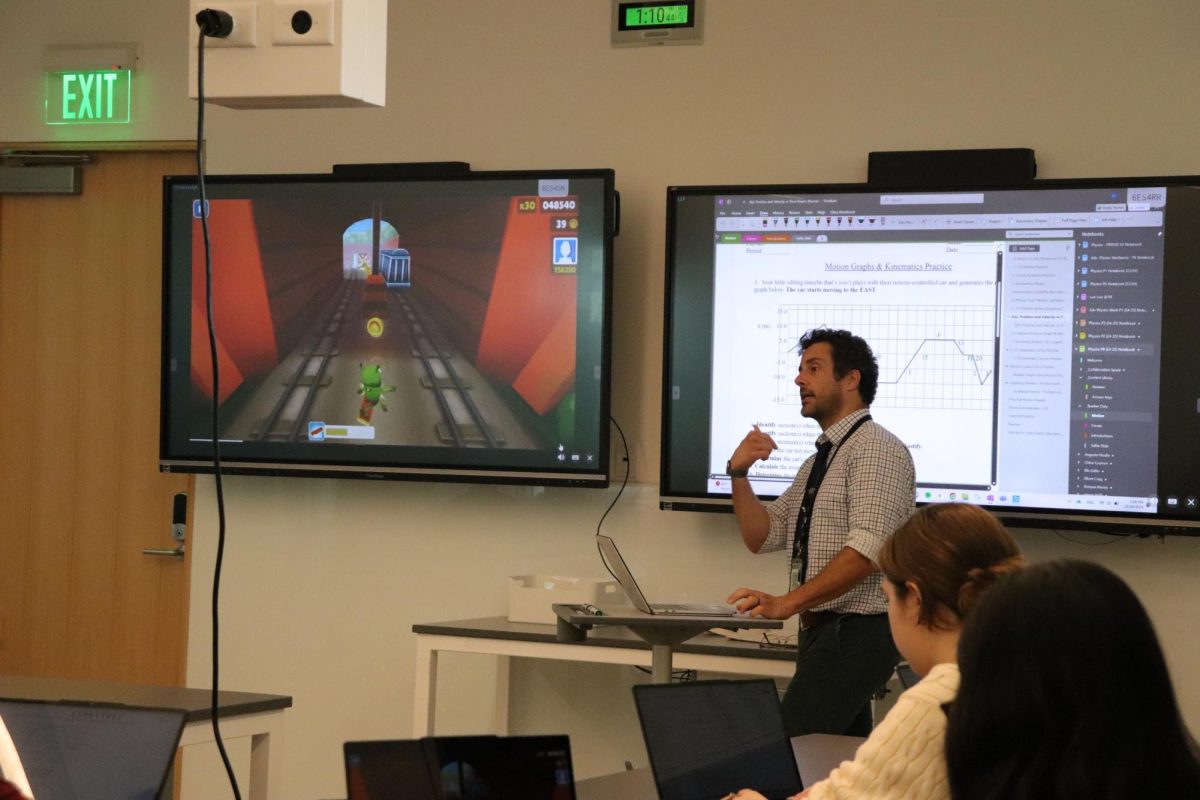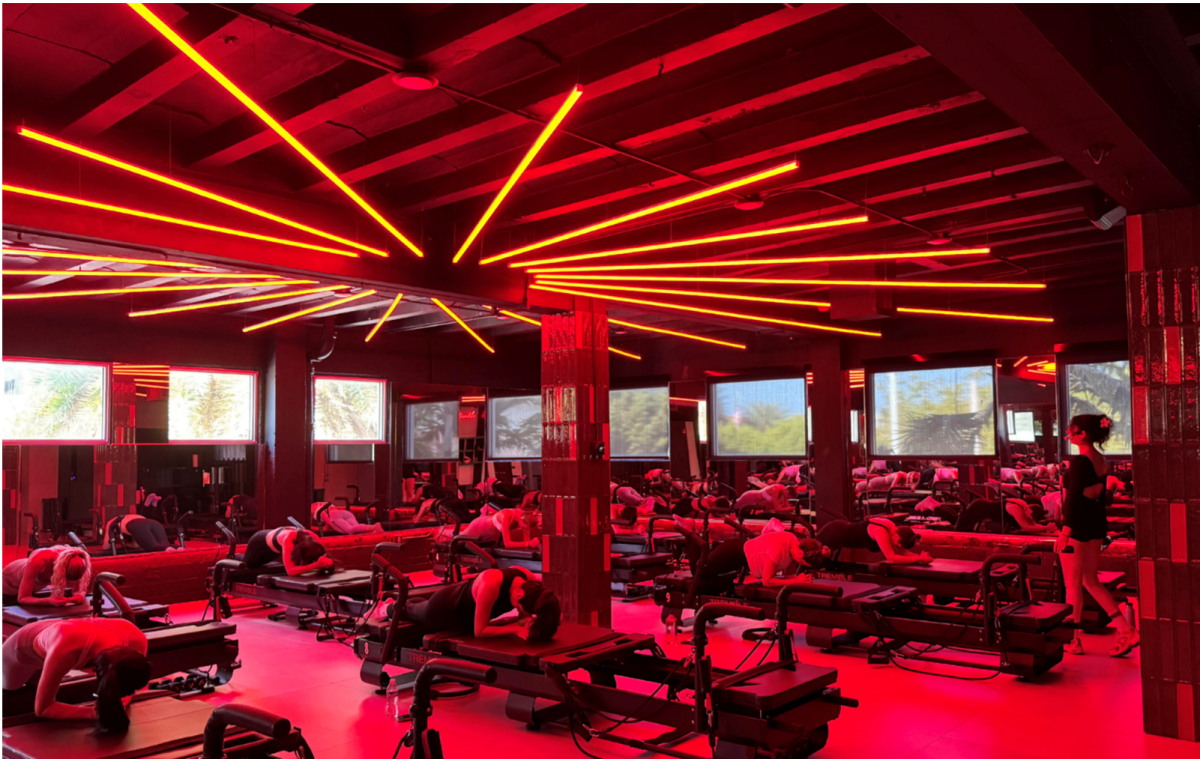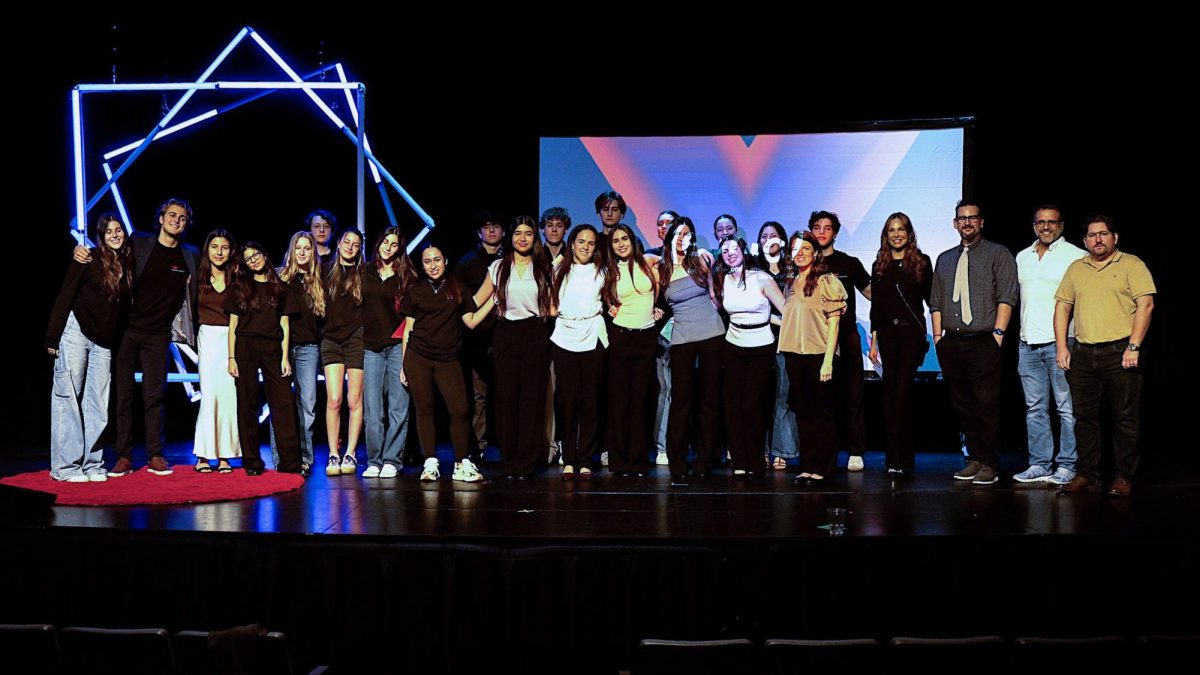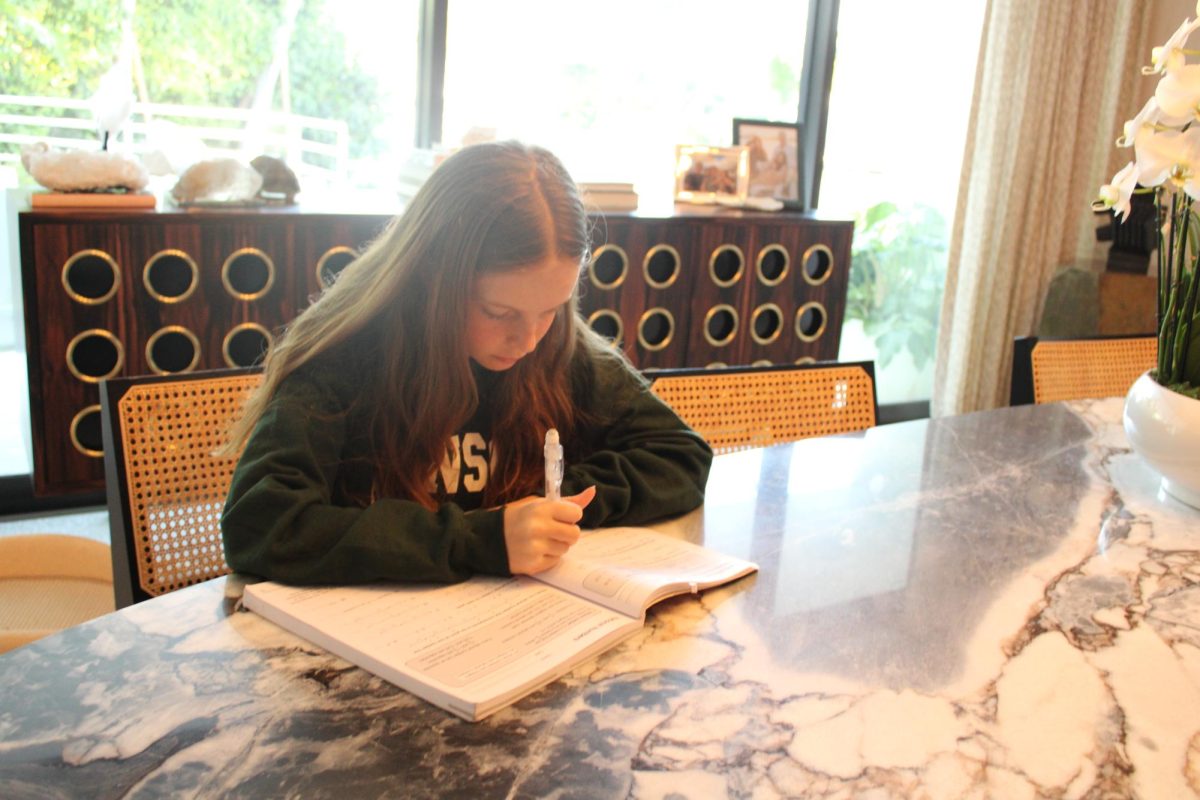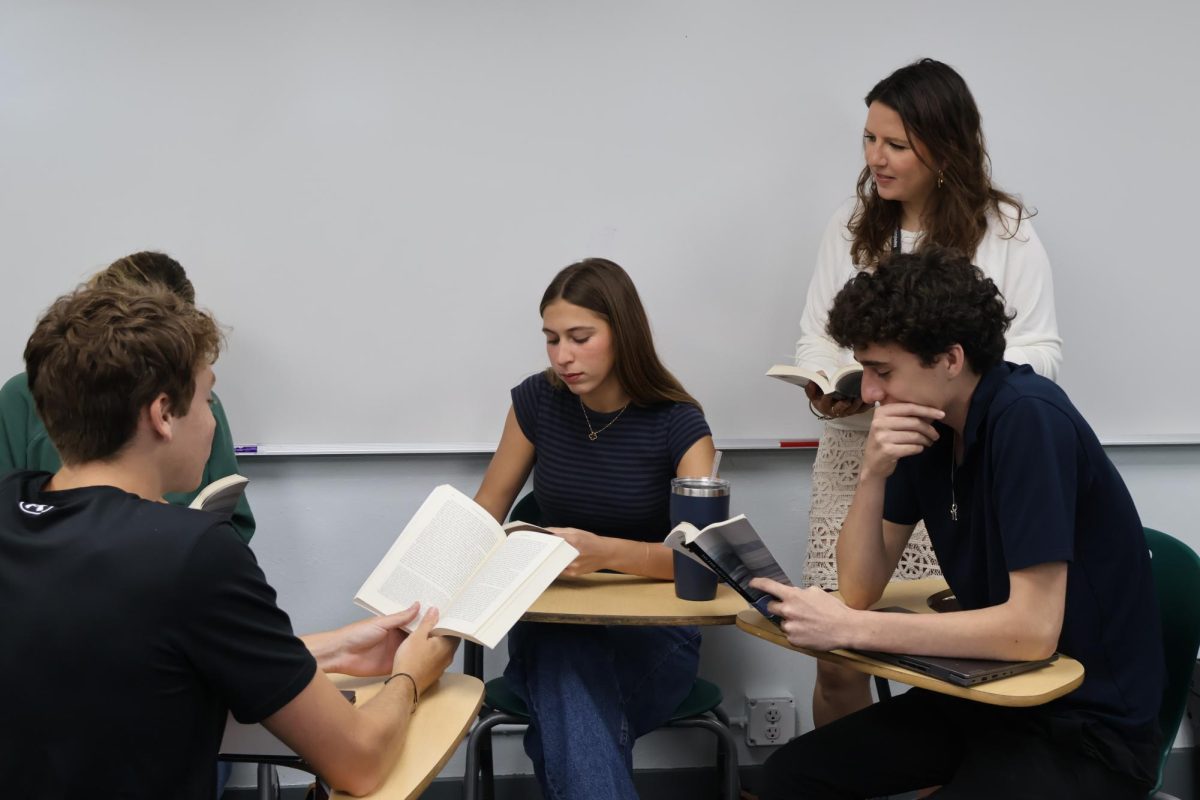“Brain rot” isn’t just a word you hear around campus anymore. It is the Oxford University Press’ 2024 word of the year. The Oxford English Dictionary defines it as:
(n.) Supposed deterioration of a person’s mental or intellectual state, especially viewed as a result of overconsumption of material (now particularly online content) considered to be trivial or unchallenging. Also: something characterized as likely to lead to such deterioration.
In our current era of overstimulation, brain rot is often seen on TikTok–or, if the ban forced you to migrate, on Instagram Reels–in the form of split-screen videos: a combination of an interview or voiceover paired with footage of a video game or other attention-grabbing media.
The split-screen format is designed to appeal to users with declining attention spans. Our brains are wired to focus deeply on a single task for optimal cognitive performance; but short-form content like TikTok, Instagram Reels, and split-screen videos hijack this system–inundating us with fleeting, stimulating bursts of information. According to a 2015 study by Microsoft, the average human attention span dropped from 12 seconds in the year 2000 to 8 seconds in 2013–shorter than that of a goldfish. Since then, research has consistently shown the adverse effects of short-form social media content, which trains our brains to seek constant novelty and gratification, shortening our ability to focus on sustained or challenging tasks, destroying our brains’ gray matter.
An AI-based “PDF to Brainrot” generator went viral last year with one of its outputs, a lecture on mitochondria translated into Gen-Z language and overlaid on top of a “Minecraft” video. “Yo, mitochondria be the ultimate MVPs of cell life, forever grinding that oxidation game,” the video began.
In October, students in Dr. Christina Iglesias’s 11th-grade Contemporary Literature class tried something similar, delivering a presentation on “The Handmaid’s Tale” while video of the game “Subway Surfers” played on a separate screen.
So, what happens when we bring these digital habits into a classroom?
I asked Mr. Luis Luis, who teaches physics at the Upper School, if he would be open to an experiment–of course he would; he’s a science teacher–that involved making his classroom into something resembling a social media landscape. The ultimate question: “Would these stimuli enhance engagement or create more distractions?”
“I think the cool thing is that, if things work out, this perspective can enhance what I do,” Mr. Luis said before the experiment.
Monday, October 28, 2024
12:55 PM: Class Begins
The start of eighth period. The physics classroom was as normal as ever: not an Expo marker out of place, not a STEM chair unpumped up to a ridiculous height. But today, Physics Period 8 students would experience something extraordinary: a split-screen setup.
On the left, a “Subway Surfers” gameplay video. On the right, Mr. Luis’ physics lecture.
Students trickled into the room, chatting and settling into their seats. Mr. Luis clarified that students would receive their last test in the next class. Everything seemed ordinary—until the lecture began.
1:10PM: The Question
A few minutes into the lesson, a student remarked, “Hey, what’s up with the ‘Subway Surfers’?”
Great question. But to ensure the integrity of the experiment, our answer was vague–simply “to mimic the media-saturated world.”
1:15PM: Physics Meets Gaming
Mr. Luis continued, covering one-dimensional motion, including position/time, velocity/time, and acceleration/time graphs. Students worked through individual problems and shared their answers.
While students worked through the problems, remarks on the player’s performance popped around the room. “This guy is so bad,” one student said.
“This guy sucks.”
“Why does he keep using surfboards?”
Despite the distractions, students completed the questions—albeit with glances at the left screen.
1:25PM: Wandering Eyes
And of course, while the experiment was happening, a tour group walked by, casting skeptical eyes over the interesting juxtaposition of “Subway Surfers” next to an acceleration by time graph.
Insults to the player’s abilities did not stop. The player kept unnecessarily using surfboard power-ups.
The students’ attention visibly started to wane, more eyes on the board analyzing the “Subway Surfers” than the difficult graph.
1:30PM: A Challenger
A mystery student joined the subway surfers projection in the left screen. There were now two Jakes running on the screen side-by-side. This was sure to get all of the students’ attention, and indeed, it did. It also caught Mr. Luis’ attention, and the mystery student promptly disconnected. The class refocused on displacement questions.
1:40PM: Adjustments
Seeing these effects, I altered the experiment slightly. We switched to sensory soap-cutting videos, which struck a balance, keeping attention at the front of the room without dominating students’ focus.
Then, we tried rug cleaning. That one was not well-liked.
Then, a video of slime. A classic.
“This is captivating,” said Mr. Luis in the midst of teaching. Students occasionally made comments about the quality of the slime.
Some students only looked at the brain rot screen, while others were locked into their calculators.
Lastly, “Minecraft.” The serene gameplay intrigued students, but curiosity about the player’s build distracted from the lesson.
1:50PM: Experiment Ends
Class ended with students individually working on their Pivot Interactives assignment and filling out a brief survey.
The results are as follows:
- Please rate your experience in today’s split-screen physics class from 1 (terrible) to 5 (amazing): 4.13.
- To what extent did the split-screen format 1 (distract me) – 5 (help me focus): 3.13.
- How engaging did you find today’s lesson compared to usual from 1 (less engaging) – 5 (much more engaging): 3.67.
- Do you consume content like this on TikTok/Instagram? From 1 (never) – 5 (regularly): 3.47.
Jilly-Demos Brown ’25, a student participant of the experiment said, “I think there’s a lot of a difference between kids multitasking and having to pretend that they’re not multitasking and kids openly multitasking.” She speculated that, because another stimulus was on the board, attention remained at the front of the room rather than splintering into personal tabs.
“I felt like it was easier to stay engaged because there was something entertaining on the screen, but I don’t know if I actually learned as much today,” said participant Nora Brue ’25.
For Mr. Luis, the experiment was a reminder that maintaining students’ attention is never easy–and varying his approach might be necessary. “It’s tough to be absolutely paying attention for a full 80 minutes. It’s okay to take a two minute break, or spend a few seconds just staring at some random video that grabs your attention for a bit. [Just as long as] you’re like, ‘Wait a minute,’ boop, and then you go back to the thing.”


